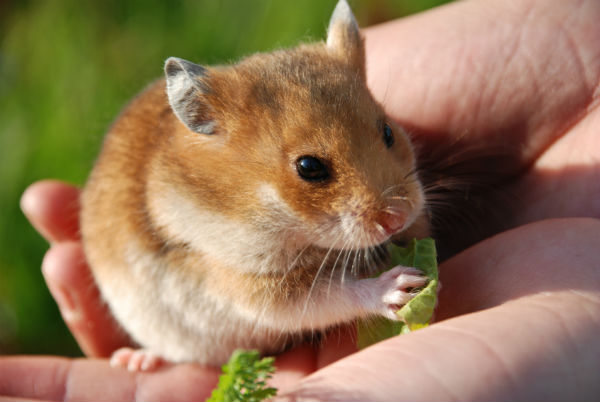Remember that cutie-patootie furball named Wilbur the Wonderful that your parents surprised you with when you reached the tender age of 8? Aw, your first official pocket pet.
With shiny whiskers, bright eyes and endlessly accommodating nut-and-seed-storing cheeks, that adorable little hamster was certainly the ideal starter companion, but not simply because it required minimal care (a major
plus for easily distracted and forgetful kiddies).
Domesticated Syrian, Golden and dwarf-type hamsters — all considered the homecoming royalty of their rodent brethren — live just a few years (much to the relief of parents who often end up assuming feeding, watering and cage-cleaning responsibilities), but they make their brief time on earth count while leaving virtually no paw print behind.
Unlike dogs and cats, both of which are typically showered with petroleum-based accessories galore by doting human guardians, no one has yet figured out how to successfully mass market hamster-specific squeaky toys, eensie-weensie sweaters, collars and other easily disposable doodads. This bodes well for their already naturally green lifestyle. Aside from the occasional exercise wheel and tunnel system (both of which are admittedly constructed with plastic),
Mesocricetus auratus and their equally fuzzy peeps thrive while embracing a no-frills way of life.
Obviously, their diminutive size, coupled with their tendency to steer clear of big-box stores, makes hamsters incredibly nonconsumeristic by nature, but there’s far more “eco” to this garden variety furball than meets the eye.
Minimal possessions
Aside from providing a hamster with a secure roof over its head, fresh nesting material, clean water and nutritious food, there is not a whole lot that they require to live life to its fullest. While the majority of their basic necessities can be purchased at a pet store, hamsters aren’t terribly discriminating and would probably be just as happy hunkering down in a
recycled or repurposed cage filled with green bedding (
eco-toilet paper or
shredded paper printed with soy-based ink are two good options).
You can certainly provide your pampered pet with its very own
hamster McMansion if you feel so inclined; just be sure to use planet-friendly and easily renewable materials. As for helping them to maintain their svelte physique, crafting a charming little
heart-rate-enhancing maze is a worthwhile option, as is fashioning a perfectly dandy
DIY exercise wheel out of an upcycled CD-ROM case.
Plant-based diet
Much has been made of the resource-intensive factory-farming industry that supplies the majority of the global human population with its relatively cheap source of animal protein. The downside to this process is that once-forested land is continually cleared in favor of cultivating cattle-fattening cereal/grain crops, which not only consume a great deal of water, but are also typically saturated with copious amounts of petroleum- and chemically derived pesticides. In stark contrast, a teeny weenie hamster munches on a largely plant-based diet of veggies, seeds, nuts, fruits, bread-based edibles and even a few juicy insects thrown in for good measure — which is as eco-friendly as it gets! Furthermore, they have modest appetites, consuming only what they really need to survive rather than
living to eat, like so many of us guilty humans.
Not wasteful
Of course, the human carbon footprint is substantially larger than that of a hamster (which can literally fit in the palm of a hand), but we work pretty diligently to keep our personal carbon emissions high in the sky. It’s not necessarily our physical size, but rather our appetite for
stuff that makes us the single most substantial contributor to global warming.
On the other hand, hamsters live well within their means, favoring recycling and practical stockpiling for a rainy day (just take a look at their cheeks for proof!) without being all-out gluttons about it. They’re not trying to keep up with the Joneses per se; they’re merely heeding a “survival of the fittest” battle cry that, in effect, ensures the longevity of their species. Humans can’t exactly claim the same motive.
Who can blame hamsters for tucking away a few extra seeds and berries… just in case? What you’ll
never ever see them do is turn their noses up at perfectly good food or ditch their leftovers. They are in effect Mother Nature’s eco-sanitation workers, scooping up the tiny bits and pieces that larger species fail to observe or even care about while a
cruncha-muncha sound emanates ever so cheerfully from their crib.
Are hamsters the poster pet for a new sustainably inspired generation? You betcha. Just ensure that your new household companion is even more turbo green by steering clear of the pet store in favor of a “
recycled” adoption option. More power to the pocket pet!
